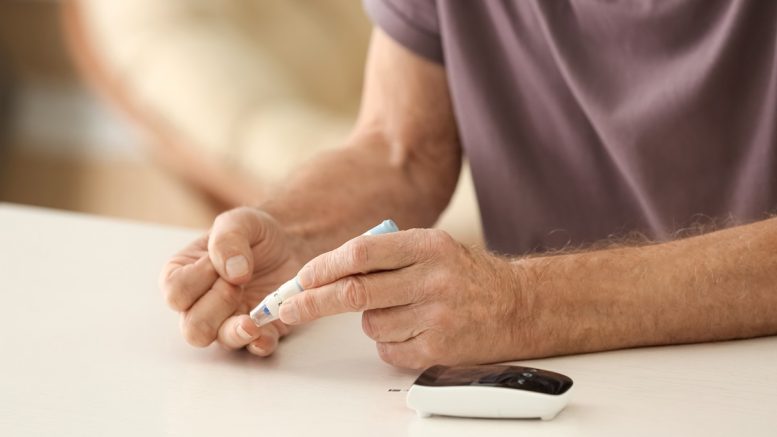Gavin Bashar, UK Managing Director at Tunstall Healthcare, discusses the advancements in technology when it comes to managing diabetes for this year’s World Diabetes Day (14th November 2023).
According to Diabetes UK, more than 4.3 million people in the UK live with diabetes, with around 90% living with Type 2 diabetes. In total the NHS spends about 10% (£10bn) of its budget on diabetes, particularly treating complications that can arise, such as stroke, kidney problems and nerve damage. An additional 850,000 people could be living with the disease who are yet to be diagnosed.
Developing diabetes and reducing risks
More than 2.4 million people are at an increased risk of Type 2 diabetes in the UK based on blood sugar levels, which is a concern when there is currently no cure for the disease. There are of course differences in how we can treat and manage Type 1 and Type 2 diabetes.
With the majority of people living with diabetes having Type 2, it’s important that we look into the reasons for why more people than ever are developing the disease and what we can do to prevent it, and manage the symptoms.
In Type 2 diabetes the body stops responding to insulin, beta cells stop working and they lose their ability to produce insulin over time. As detailed by Diabetes UK, research is finding that Type 2 diabetes is showing that remission is possible. Weight management, which includes eating well and moving more, can not only reduce the risk of developing Type 2 diabetes, but also help to manage symptoms and even have the potential to lead to remission.
The role of technology in managing diabetes
But it’s not only about living a healthy lifestyle which is valuable when it comes to supporting people living with diabetes. Utilising the range of solutions that are available, including technology, can lead to people with diabetes living with greater independence, fewer rates of hypoglycemia (low blood sugar), and encouraging personal engagement when it comes to managing the condition.
When embedded into care provision effectively, technology can support the monitoring and management of symptoms of diabetes whilst minimising the requirement for regular interventions which can lead to an increase in independence and wellbeing. By automatically taking regular readings, technology can be used by clinicians to monitor the health of their patient and their behaviour without having to be directly involved on a regular basis.
This in-depth use of data can highlight any changes in an individuals’ health and wellbeing, which in turn can contribute to a reduction in the potential for complications to arise. For example, if an individual is experiencing greater frequencies of hypoglycemia, it may be time to coordinate an intervention to ensure that their health doesn’t deteriorate.
When used in the management of diabetes, technology can also drive greater collaborations between clinicians. For example, an individual with diabetes who’s receiving care in their community will require contributions from a number of different specialists, including their GP, carers, and potentially the hospital. Technology can create collaborative care records that can be accessed by any clinician involved in the monitoring of an individuals’ care. This in turn ensures that they can easily flag with each other if an anomaly or changes in the data are spotted and therefore proactively reduce the risk of a person’s diabetes getting worse.
Diabetes management in practice
A 12 week telehealth pilot project was undertaken in County Wexford, overseen by a multi-agency Stakeholder Group; Age Friendly Ireland, Integrated Care Programme in the HSE, Wexford General Hospital, Tunstall Emergency Response, Wexford County Council-Age Friendly Programme.
The objectives of the pilot project were to establish a proof of concept for the provision of a telehealth service for three identified chronic conditions; diabetes, chronic health failure and chronic obstructive pulmonary disease. The research aimed to evaluate the pilot telehealth intervention, considering:
- The impacts of the intervention on the patient’s clinical condition and wellbeing;
- in -person use of health services ascertaining patient and clinician perceptions of the intervention and technology and;
- an analysis of the cost effectiveness of the intervention.
Tunstall telehealth equipment was provided to the patients for a 12 week duration. The technologies used were the ‘myMobile’ patient app and ‘triageManager’.
The ‘myMobile’ is a patient app which enables self-management and monitoring. The app collects data from monitoring devices on vital signals such as pulse, oxygen levels, weight and blood pressure, as well as patient symptoms. It provides a range of benefits including automatically updated readings via Bluetooth connected devices and the ability for manual entry of readings, and automated alerts and activity reminders.
‘triageManager’ is a clinical management software platform which enables clinical and service teams to monitor patients remotely. The system enables a number of outputs including automated prioritisation tools and summary reports for clinicians.
Patients were highly engaged with the project, with 98% of readings recorded. There were also low levels of attrition which were partly due to the support provided by Tunstall with any queries they had, and reminders to take readings.
One participant commented that “It’s nice to know you are being monitored, which gives you more confidence.”
Another added that it gave them confidence in their illness management, saying: “I think because when I knew my oxygen levels were good, it gave me more confidence to go about my day and do more activities.”
A participant found that their use of the health service improved. “I suppose I have been in the health service, and I think the change for users is that you can get a check from home without having to constantly go back and forth to the hospital.”
For more information about how technology can support people living with diabetes, please visit www.tunstall.co.uk.





